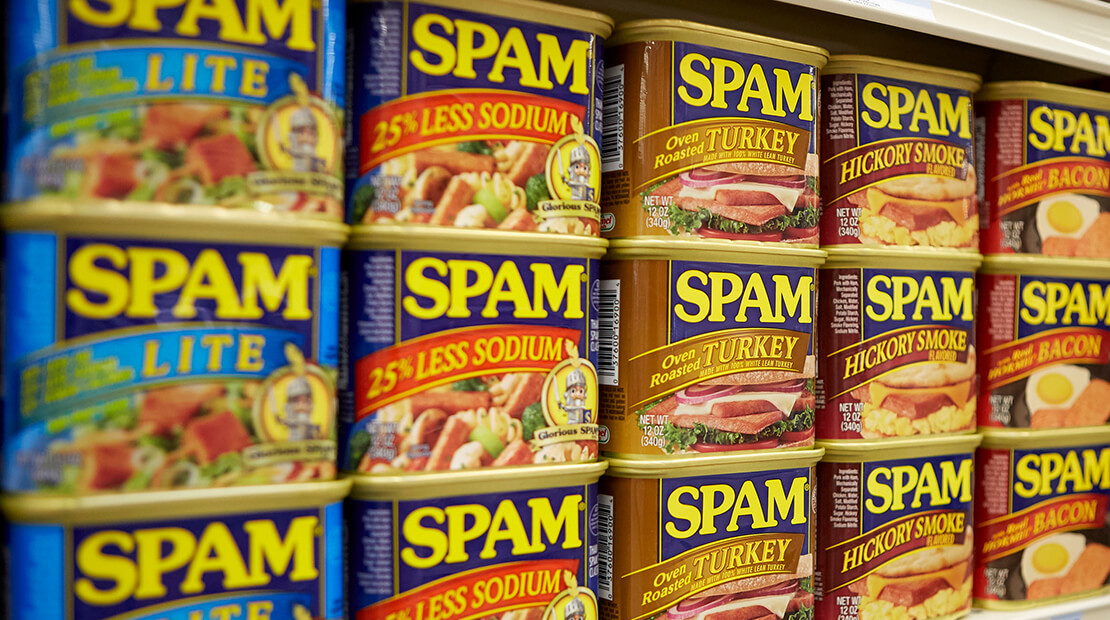Brands
What Is SPAM, Anyway?

Reader’s Digest
It shares its name with those annoying emails you don’t want. It comes in a can and is made of…some kind of meat? Whether you grew up eating it and still do or you’ve merely eyed it suspiciously in a supermarket aisle, you’ve probably found yourself wondering “What is SPAM?” at some point. Well, the answer to that question actually may not be as complicated as you think!
What is SPAM?
SPAM is a canned lunch meat product that first hit shelves in 1937. It was created in Austin, Minnesota by the manufacturers Hormel Foods. Toward the end of the Great Depression, SPAM helped fill a huge need for inexpensive meat products. And its popularity only grew. “It cemented its place in the culinary world during World War II, due to its ability to be stored for long periods of time,” explains James Schend, food editor at Taste of Home. “It could be easily shipped around the world.” And it was, both then and now; today SPAM products are available in 44 different countries, according to their brand site.
Today, there are 15 different SPAM varieties, from Classic to Teriyaki to Jalapeño. Love it or hate it, you can’t deny that it’s everywhere. Over eight billion SPAM products have been sold worldwide, and in 2016, a SPAM museum opened in its birthplace, Austin, Minnesota. Learn about the surprising birthplaces and origins of 19 more foods you see everywhere.
What is SPAM made of?
It may come as a pleasant surprise to learn that SPAM is not the preservative-packed mystery meat you might think it is. In fact, SPAM only contains six ingredients! And the brand’s website lists them all. They are: pork with ham meat added (that counts as one), salt, water, potato starch, sugar, and sodium nitrite. Most of those are as simple as simple gets! The only one that might raise eyebrows a little is the sodium nitrite, which is “a preservative to help retain freshness,” Schend explains. The website says that it is there to “uphold the meat’s high standard of quality.”
To make SPAM, the ground-up pork and ham are mixed with the other ingredients for 20 minutes. When the mixture reaches the proper temperature, it’s put into the cans, which are vacuum-sealed. The cans are cooked and then cooled for three hours, after which they’re ready for their labels. And that’s all there is to it!
Food
Refreshing Legacy Brands
Hormel Foods keeps heritage products relevant for today’s consumers through form innovation.
Explore InnovationFood
From Seoul to Supermarkets
South Korea is amplifying its cultural influence on the global stage and onto our plates
Explore The TrendFood
The Countertop Dynamic Duo
Slow Cookers and Air Fryers: A Culinary Revolution of Convenience
Read More